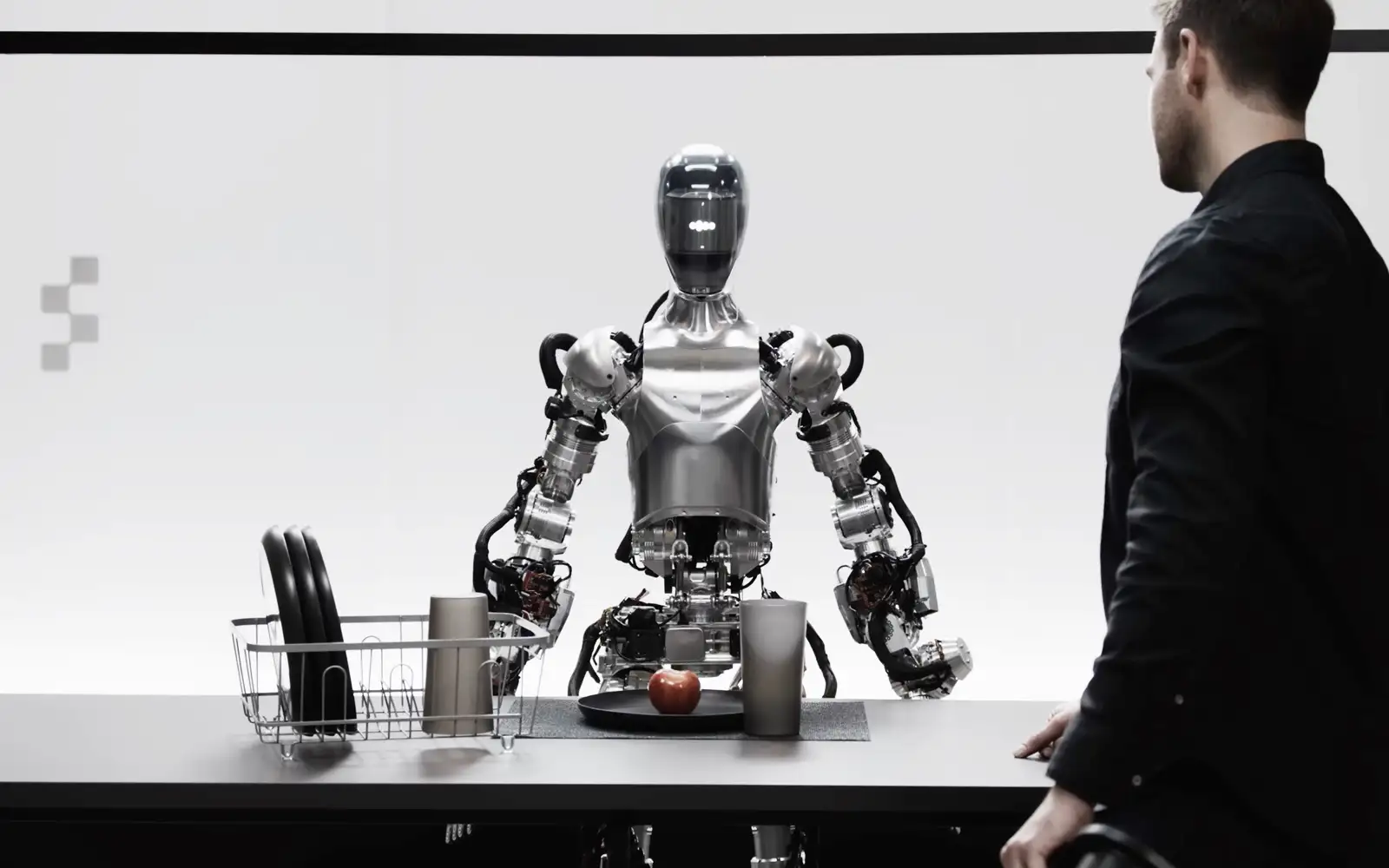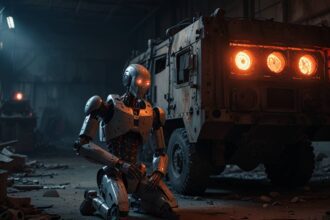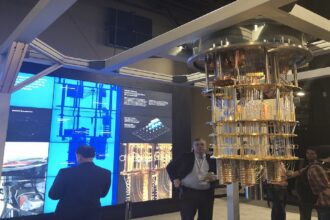The Optimus Tesla Robot envisions a future where your daily chores those tedious tasks you dread become a distant memory. Imagine a future where your daily chores—those tedious tasks you dread—are a thing of the past. Picture a world where a humanoid robot, capable of working alongside you in the office or at home, handles everything from cleaning to cooking and even complex problem-solving.
This isn’t science fiction; it’s the reality Tesla is bringing to life with its Optimus robot. Unveiled by Elon Musk in 2021, Optimus is poised to revolutionize the way we work, interact, and live. But with all the hype, what makes Optimus so special? And why is it causing both excitement and concern among experts and the public? Let’s dive in and explore the features, potential, and challenges of the Tesla Optimus robot—and why it could change the world as we know it.
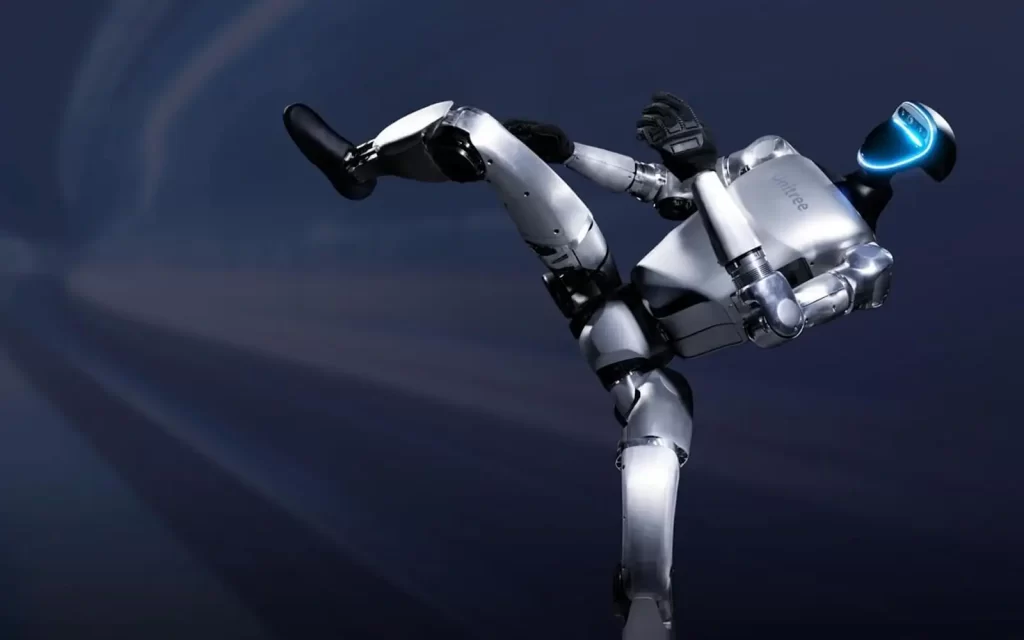

What Is the Optimus Tesla Robot?
The Optimus Tesla robot isn’t just another machine—it’s a groundbreaking leap in robotics. Tesla’s ambition with Optimus is to create a humanoid robot capable of performing general-purpose tasks, making it far more versatile than traditional robots that are usually designed for one specific job. Standing 5 feet 8 inches tall and weighing around 125 pounds, Optimus closely resembles a human figure, giving it an almost uncanny, futuristic design.
Key Features of Optimus:
- Advanced AI: Powered by Tesla’s cutting-edge Full Self-Driving (FSD) AI technology, Optimus can understand its environment, make decisions, and adapt to new tasks. This advanced AI allows it to learn from real-world experiences, making it more capable over time.
- Human-like Mobility: Equipped with 40 electromechanical actuators, Optimus can move with incredible precision, walking, climbing stairs, and even handling delicate objects.
- Energy Efficiency: The robot is powered by a 2.3 kWh battery that enables it to operate for an entire day without needing to recharge—ideal for both home and workplace environments.
- Multi-Tasking Ability: Unlike specialized robots, Optimus is a general-purpose machine that can perform a wide variety of tasks—from assembling parts in factories to performing household chores.
What Can Optimus Do?
Tesla envisions Optimus as a transformative force across multiple sectors. From automating factories to assisting in homes, the potential applications of this robot are endless.
- Automating Factories
Optimus is set to revolutionize the manufacturing industry by taking over repetitive, time-consuming tasks like assembly, material transportation, and quality control. Tesla plans to initially deploy the robots in its own factories, reducing labor costs and increasing overall efficiency.
- Assisting at Home
Think about walking into your house after a long day to find Optimus preparing dinner, cleaning the floors, or even helping you with groceries. Tesla aims to make daily life easier by allowing Optimus to perform a variety of household duties. This could also be a game-changer for elderly or disabled individuals, offering them a new level of independence.
- Transforming Logistics and Retail
Optimus has the potential to optimize warehouses by managing inventory, stocking shelves, and ensuring 24/7 operations. For retailers, this robot could revolutionize supply chains, improve customer service, and streamline overall operations.
- Social Interactions
One of the most fascinating aspects of Optimus is its potential for social interaction. Tesla has teased the idea that the robot could one day act as a companion or assistant, capable of having meaningful conversations and responding to human emotions. Recent demos have shown Optimus reacting to verbal commands and performing tasks in real-time—blurring the line between machine and human interaction.
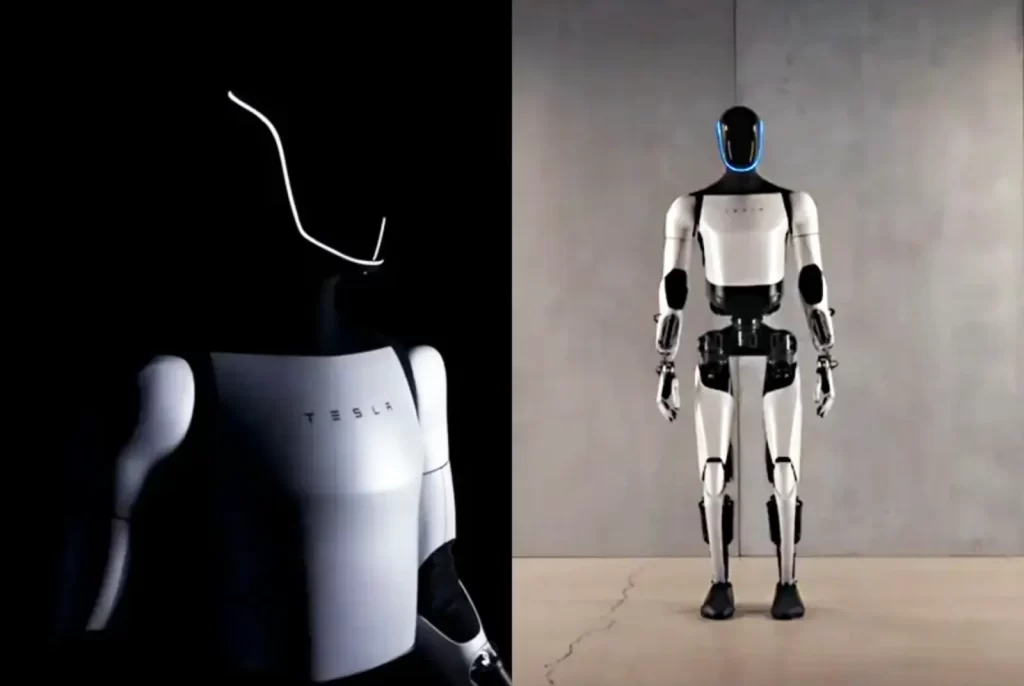

What’s New with Optimus?
Production Timeline
While Tesla has been tight-lipped about exact launch dates, the company plans to start low-volume production of Optimus by 2025. Initially, these robots will be used internally within Tesla’s operations, but by 2026, Optimus could be available for other companies, bringing humanoid robots to a global market.
Public Demonstrations
Recent public demos have been both exciting and eye-opening. In one such event, Optimus was seen walking fluidly, stacking blocks, and responding to commands in real-time. These demonstrations have impressed many, but they’ve also sparked important discussions about the ethical and technical implications of integrating such robots into daily life.
Pop Culture Moment
Optimus recently made a surprise appearance at a tech event alongside none other than Kim Kardashian, marking a significant step toward normalizing humanoid robots in popular culture. While some were thrilled by the futuristic demonstration, others worried about the implications of robots becoming fixtures in our social and professional lives.

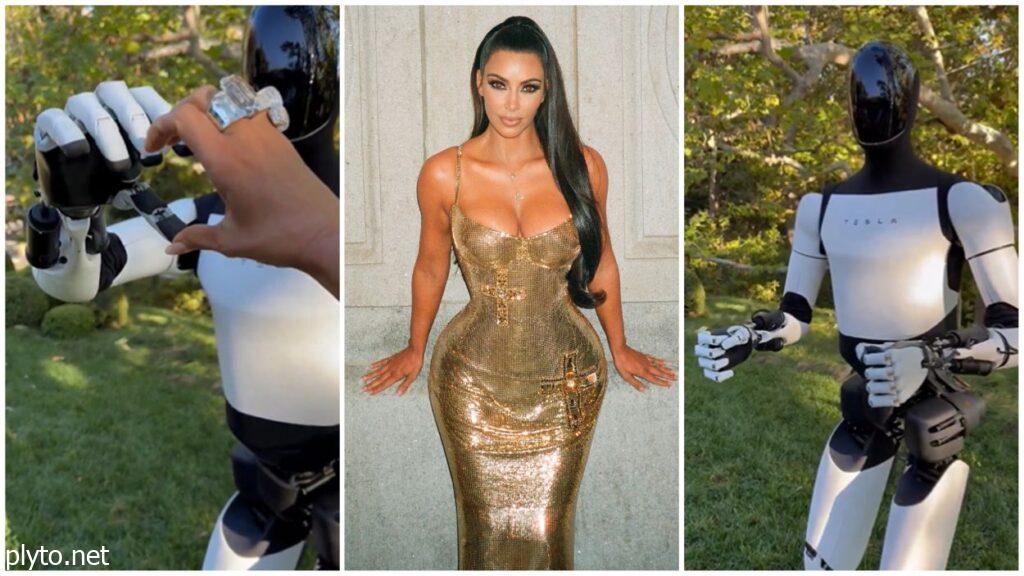
Why Are People Excited?
The excitement surrounding Optimus isn’t just about the technology—it’s about the potential to change entire industries. Optimus could revolutionize sectors like healthcare, manufacturing, and logistics by automating tedious tasks and improving efficiency.
Imagine a hospital where Optimus assists doctors and nurses, helping with everything from routine tasks to specialized procedures. Or picture a farm where robots harvest crops, reducing labor costs and increasing food production. The possibilities are endless.
For tech enthusiasts, Optimus represents the future of AI and robotics—an era where machines don’t just follow pre-programmed instructions but learn and adapt from their environment. As Elon Musk has mentioned, Optimus could become “the most important product Tesla is developing,” positioning it as the company’s future cornerstone.
Why Are People Worried?
While Optimus excites many, it also raises significant concerns. Here are some of the major worries surrounding its development:
Impact on Jobs
One of the most debated topics is the potential job displacement Optimus could cause. As robots take over more manual labor tasks, many workers—especially in industries like manufacturing, logistics, and retail—could lose their jobs. This raises broader questions about the future of work and how society will adapt to a world increasingly dominated by AI and robots.
Ethical Dilemmas
Optimus’s ability to engage in meaningful social interactions raises complex ethical questions. As these robots become more human-like, can we form emotional connections with them? And should we? There are concerns about the blurred lines between human relationships and robotic companionship.
Privacy and Security Risks
As with any AI-driven technology, there are concerns about privacy and security. What kind of personal data will Optimus collect? How will Tesla ensure that this information is kept secure? These are questions that need to be answered as robots like Optimus move from the lab to real-world environments.
The Road Ahead: Challenges and Opportunities
Despite the impressive strides Tesla has made, Optimus faces several technical and societal challenges. Creating a robot capable of seamlessly integrating into human environments is no small feat. Tesla needs to overcome significant hurdles such as improving battery life, refining AI decision-making, and ensuring the robot’s safety in public spaces.
However, the potential benefits are immense. If successful, Optimus could:
- Revolutionize industries by automating labor-intensive tasks.
- Empower individuals with disabilities, enabling them to live more independently.
- Lead to groundbreaking advancements in AI and robotics that benefit society as a whole.
Final Thoughts: A New Era of Robotics
The Optimus Tesla robot is not just a piece of cutting-edge technology—it’s a glimpse into the future of human-robot collaboration. Whether it’s transforming workplaces, assisting at home, or interacting with people, Optimus represents a major leap forward in the world of robotics. While challenges remain, Tesla’s progress with Optimus is undeniably thrilling.
As we look toward the future, one thing is clear: Optimus is set to play a significant role in shaping the next era of robotics. Whether you’re excited about the possibilities or concerned about the consequences, the world is watching closely. Will Optimus live up to its promises? Or will it create more questions than answers? Only time will tell—but one thing’s for sure: the future of robotics is here, and its name is Optimus.



